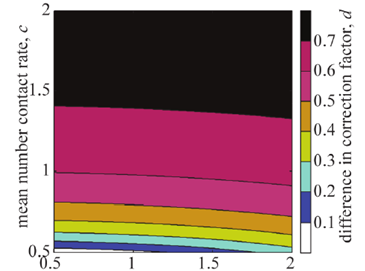Prostitution Unlikely To Cause HIV Epidemics
When it comes to the study of sexually transmitted diseases, good data is hard to come by. Most is obtained either from interviews with a small number of people or by larger random surveys.

Both these methods have important limitations. The small scale surveys do not spot large scale patterns of behaviour and the larger surveys ask for the number of partners but do not record the pattern of connections between them. Consequently, the networks of links between sexual partners are poorly understood.
Earlier this year, we looked at some interesting work by Luis Rocha at Umea University in Sweden and a couple of buddies who studied a public website in Brazil in which men have graded and categorised their sexual encounters with female escorts over a period of six years. The researchers then used this data to reconstruct the network of links between prostitutes and their clients, both in time and in space.
That’s an impressive data set amounting to over 50,000 encounters between 16,000 people. “Our data set covers, we believe, the escort business of Brazil rather completely,” say Rocha and co.
Today, they take this work further by asking how well a sexually transmitted disease might spread through such a network. The answer is surprising.
Rocha and co study the spread of HIV in particular. They point out that a key factor in the spread of the disease is the viral load. During the chronic infection stage, the load is low enough that it requires several contacts between two individuals over a short period of time for the infection to spread.
This kind of contact is rare in the network that Rocha and co have uncovered.
But what of the acute stage of the disease when the viral load is greater and the chances of infection much higher? Again Rocha and co say the disease cannot spread through the network, even if the infection rate is 100 per cent.
The reason is the time between sexual contacts. Rocha and co say there is an epidemic threshold in which the disease spreads if it is infectious for more than about a month. However, the acute stage of HIV appears to last for only for a couple of weeks. This just isn’t long enough to spread given the rate of contact that occurs in this network.
That’s a surprise, not least because there is an epidemic threshold at all. As Rocha and co point out: networks with power-law degree distributions do not generally have epidemic thresholds. Theirs must differ in some important way.
Their network can still support the spread of disease, however. They can study this by looking only at certain types of encounters such as oral sex without condom and kissing on the mouth. In this case, the resultant network is still connected and capable of transmitting disease in the worst case scenario.
However, the work reveals interesting ways of combating the spread of disease. As expected, removing the most sexually active individuals does the trick. More unexpected is their discovery that removing the most frequent travellers is just as effective.
Of course, the work has important limitations. “Contact patterns of commercial sex cannot be generalized to a whole population,” point out Rocha and co.
But an interesting question is how well the pattern can be generalised. Does it apply to escorts in other cultures or to other forms of commercial sex, for example? And most important of all, does it apply to non-commercial sexual contact patterns?
Rocha and co have their work cut out to answer these and other questions.
Ref: arxiv.org/abs/1006.2856: Simulated Epidemics Iin An Empirical Spatiotemporal Network Of 50,185 Sexual Contacts
Keep Reading
Most Popular
How scientists traced a mysterious covid case back to six toilets
When wastewater surveillance turns into a hunt for a single infected individual, the ethics get tricky.
The problem with plug-in hybrids? Their drivers.
Plug-in hybrids are often sold as a transition to EVs, but new data from Europe shows we’re still underestimating the emissions they produce.
What’s next for generative video
OpenAI's Sora has raised the bar for AI moviemaking. Here are four things to bear in mind as we wrap our heads around what's coming.
Stay connected
Get the latest updates from
MIT Technology Review
Discover special offers, top stories, upcoming events, and more.